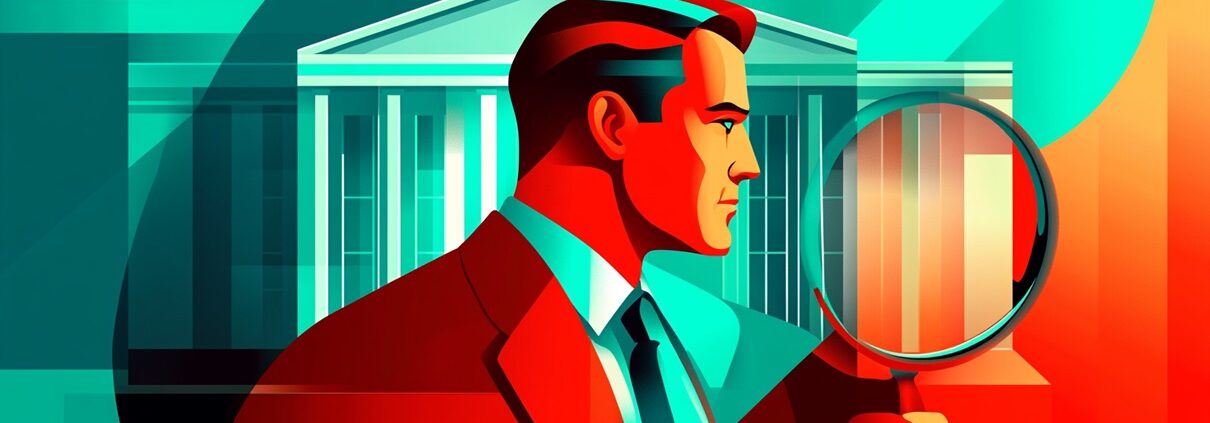How Do Banks Investigate Disputes Between Cardholders & Sellers?
When it comes to your hard-earned money, understanding your rights as a cardholder and how financial institutions operate can be crucial. Whether you have been a victim of unauthorized transactions, faced merchant errors, or received defective items, your bank is there to help with something known as a cardholder dispute process.
As a cardholder, you’re entitled to dispute a charge if you believe it’s incorrect. Banks have established a specific process for investigating these disputes, which is designed to ensure fairness and clarity throughout the resolution process.
So how do banks unravel these cardholder disputes? Let’s delve into it!
Overview of the Dispute Process
Upon receiving your complaint, the bank kickstarts a thorough investigation. An investigator, typically from the bank’s fraud detection department, analyzes your claim. They will gather evidence related to the disputed transaction, like transaction specifics, your account details, and your claim’s basis.
The investigator then reviews all the collected data to evaluate your claim’s validity. This crucial appraisal step is not just about matching digits and decimals but examining whether your claim stands true to the facts.
Once the analysis is complete, the bank has two options: they can either agree with your dispute and file a chargeback on your behalf, or reject your inquiry if they find it invalid.
Card Dispute Timeframes
Keep in mind, though, that this process is not instantaneous.
If the dispute pertains to fraud or a ‘not authorized’ claim, the bank has a 10-day window to complete their investigation. In the meantime, they might issue a provisional refund to put your mind at ease. This temporary credit serves as a placeholder until the bank reaches a final decision.
On the other hand, if your claim is regarding defective merchandise or a billing error, banks have 45 to 60 days (depending on the card network regulations) to resolve it. During this period, they might ask for additional documentation or information from you to support your dispute.
As we’ll touch on later, though, sellers have the right to reject your claim. They can respond to the dispute with documentation, to try and recover the sale. Due to this and other factors, the overall dispute resolution can take weeks or even months. So, patience is key!
When is it Appropriate to Dispute a Charge?
You might wonder – when should you, as a cardholder, dispute a charge?
Well, if you identify any unauthorized transactions, merchant errors, or if you receive any significantly delayed, defective, or damaged goods, you have the right to dispute the charge. The key here, however, is to have a valid reason for your claim. It’s essential to provide all the necessary information and documentation to support your dispute.
It’s also worth noting that you should first try to resolve the issue with the merchant directly before filing a dispute. In some cases, they might be willing to work with you and offer a refund or exchange. However, if this is not possible or unsuccessful, then it’s appropriate to take the next step and file a card dispute.
To increase your chances of having a successful card dispute, here are a few additional tips:
- Keep track of all your transactions: This will help you easily identify any unauthorized charges or errors when reviewing your statements.
- Read through your card’s terms and conditions: Familiarize yourself with your card issuer’s dispute policies and procedures.
- Act quickly: Don’t wait too long to file a dispute. Most card issuers have time limits for disputing charges, so it’s best to act promptly.
- Provide all relevant information and documentation: As mentioned earlier, having all the necessary evidence to support your claim is crucial in having a successful dispute.
- Stay patient and persistent: Dispute resolution can be a lengthy process, but staying patient and persistent can help you get the desired outcome.
What Happens if the Merchant Rejects Your Claim?
At this juncture, the seller has two options. They can accept the chargeback, indicating the merchant is at fault and hence, you receive a refund.
Alternatively, they can challenge the chargeback. This involves showcasing evidence to prove the transaction’s legitimacy. If the merchant’s evidence outweighs yours, they can reverse the chargeback, placing the ball back in their court.
To save time, money, and avoid unnecessary disputes, it’s always a smart move to first contact the merchant directly before filing a chargeback. Try to work it out with them to resolve the issue amicably. It’s a win-win for all parties involved!
In conclusion, as a cardholder, it is crucial to understand your rights and responsibilities. Familiarize yourself with your bank’s dispute resolution process so you can navigate any financial troubles with confidence and ease. Remember, your bank is there to support and secure your financial wellbeing.



